|
© 2001-2004 C&StL |
Ordre de marcheUne photo typique: une vieille gare avec un mât de signal passant par son toît. Au bout du mât, un signal.. Très souvent, un sémaphore inopérant, auquel il manque parfois les bras, victime du modernisme. Mais quel est donc ce mystique signal? À quoi servait-il? Il s'agît, en fait de signal qui fut le plus répandu sur les chemins de fer nord-américains au cours du dernier siècle. Son nom: Signal d'ordre de marche. Avant de connaître la signification du signal, il faut savoir à quoi il servait. Au tournant du siècle dernier, les méthodes de contrôle des trains étaient assez limitées. Un télégraphiste travaillait dans chaque gare (aussi appelé "opérateur"). Le contrôleur, posté dans un centre névralgique du réseau et contrôlant souvent toute la subdivision, envoyait les ordres de marche aux trains via les télégraphistes. Ceux-ci les mettaient sur papier et les transmettaient aux trains de deux façons: soit par un papier attaché au bout d'une corde tendu dans un demi-cerceau que l'équipe de train attrappait au vol lors du passage du train à basse vitesse (aussi appelé un balai), soit que le train devait s'arrêter à la gare et là, l'équipe de train prenait son ordre de marche. Une explication simpliste de l'ordre de marche est "une autorisation du train à poursuivre sa marche vers la gare suivante avec instructions si oui on non il devait rencontrer un autre train en route". Dans l'affirmative de la rencontre, l'ordre de marche pour chaque train spécifiait les manoeuvres à effectuer pour que la rencontre se fasse sans heurt. Aujourd'hui, les ordres de marche transmises par télégraphistes ont été remplacé par la méthode plus efficace de la Restriction d'Occupation de la Voie. Le tableau suivant résume les significations d'un signal d'ordre de marche.
Avant de copier cette page, lisez le copyright
| ||||||||||||||||||||||||||||||||||||||
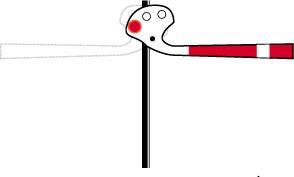 |
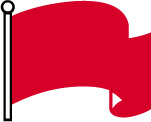 |
|
| Would it be the semaphore, the flag or the electric signal, the red (Rule 401a of the Unified Code, or order 19R) means that the train must stop at the station to take the order. This order affected the rights of the train at this station. In most case, the meet with another train was scheduled at this station. Another reason why a train could receive a 19R order was if a superior class of train was running behind a inferioir class of train. Order 19R was to protect trains against rear-end collision. This order was called a "restrictive" order because the movement was asked to stop completly. | ||
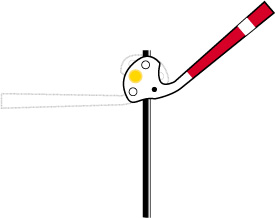 |
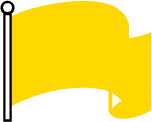 |
|
| Would it be the semaphore, the flag or the electric signal, the yellow (Rule 401b of the Unified Code, or order 19Y) means that the train must slow down at the station to take the order (by the cab crew and the caboose crew). This order affected the rights of train for the next station or siding. This was called a "non-restrictive" order because the movement was not asked to stop completly. | ||
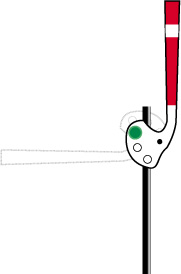 |
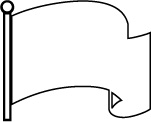 |
|
| Would it be the semaphore or the electric signal, or the white flag (event if some railraods used the green flag), the green (Rule 401c of the Unified Code, order 19G) means that the train may pass without slowing at the station. No order was delivered. The reasons why an order was not delivered is because the station could be closed (no operator on duty) or the preceding order allows the train to pass right thru this station without another order. | ||